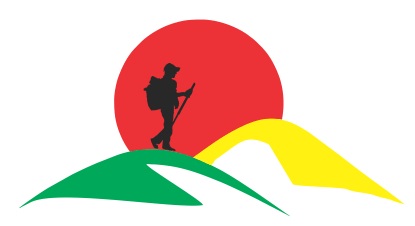Ethiopia Community Based Tour
Danakil Depression Tour
Abune Yosef
Abune Yosef is the massif on top of the mountains of LASTA around and above Lalibela.
This absolutely stunning spot on earth is a highly endangered ecosystem with a complex mosaic of bush-/woodland, montane dry forests, afro-alpine grasslands and evergreen forests, which can be described as a savannah landscape. It gives at least 43 mammal species a home, more than 221 bird species are found there (from which are 9 marked as threatened species) and the landscape is just truly breathtaking.
All of this is in urgent need for conservation, the main threads are the global climate changes as well as the loss of the afro-alpine habitats for the immense variety of animals due to deforestation, overgrazing and agricultural activities in order to fit the basic necessities of the Ethiopian highlanders living there.
Abune Yosef lays at around 3800m, the mammals include 7 endemic ones.
You will still find the ETHIOPIAN WOLF (approximately 80 animals) -considered to be the rarest and most endangered canid in the world- other places to see this animal would only be the Simien- and Bale mountains.


Herds of GELADA BABOONS inhabit the massif- the only grass eating Baboons in the world!
There are also Leopards, Grivet Monkeys, Bailey's Shrews, side striped and golden Jackals, Ethiopian Genets, African Civets, many different Mongooses, Hayenas, African wildcats, Caracals, Aardvarks, Bush Pigs, Bush Duiker, Klipspringer, Squirrels and many bats.
But not only for the mammals Abune Yosef is an important place- it has one of the highest diversities and endemically levels of birds in Africa.
This makes it the second most important bird area in Ethiopia!
Go up there and you will find 9 threatened birds like the:
-Blue winged Goose
-Lappet- faced Vulture
-Greater spotted Eagle
-Pallid Harrier
-Lesser Kestrel
-Abysinnian Longclaw
-Sombre Rock Chat
-Ankober Serin
-Cinereous Buntin
You also can check out the bearded Vulture, of which the last population disappeared in Europe (Spain) in 1985. In Ethiopia you still have 1430 pairs of them- the largest population in the world. They have even been seen in the Himalayas, flying well above 8000m, at temperatures below -40 degrees.
Apart from threatened birds, Abune Yosef got many more, like:
-Golden Eagles
-White colored Pigeons
-Black- billed wood Hoopoes
-Hemprich Hornbills
-Crag Martins
-Rueppell' s Chats
-Sombre Rock Chats
-Somali Chestnut-winged Starlings
-Choughs


When it comes to the vegetation, Abune Yosef shows many different and interesting zones, from a moderately warm belt at 1800m-2500m to up to the alpine zone above 3500m.
Up on the plateau grow ancient Junipers, African wild Olives, Eucalyptus trees; Hagenia Abyssinicia, Euclea Schimperi, Erica, Hypericum revolutum, Alchemilla, Potcutilla, Helychrisum, Senerico, Carex, Poa, Festuca, Agrostis and Giant Lobelias.
Abune Yosef hosts one of the 14 Ethiopian peaks well above 4000m- the mighty RIM GEDEL (4284m) and two peaks which are slightly smaller than the mark, BIG ZIGIT (4080m) and the SMALL ZIGIT (4025m).
At the north- western slope of the massif (3300- 3600m) is situated an ancient village-Tigu Kebele.
The people are farmers and cultivate crops as Barley, Onion, Potatoes and Lentil.
The hike to ABUNE YOSEPH will take around 8 hours






